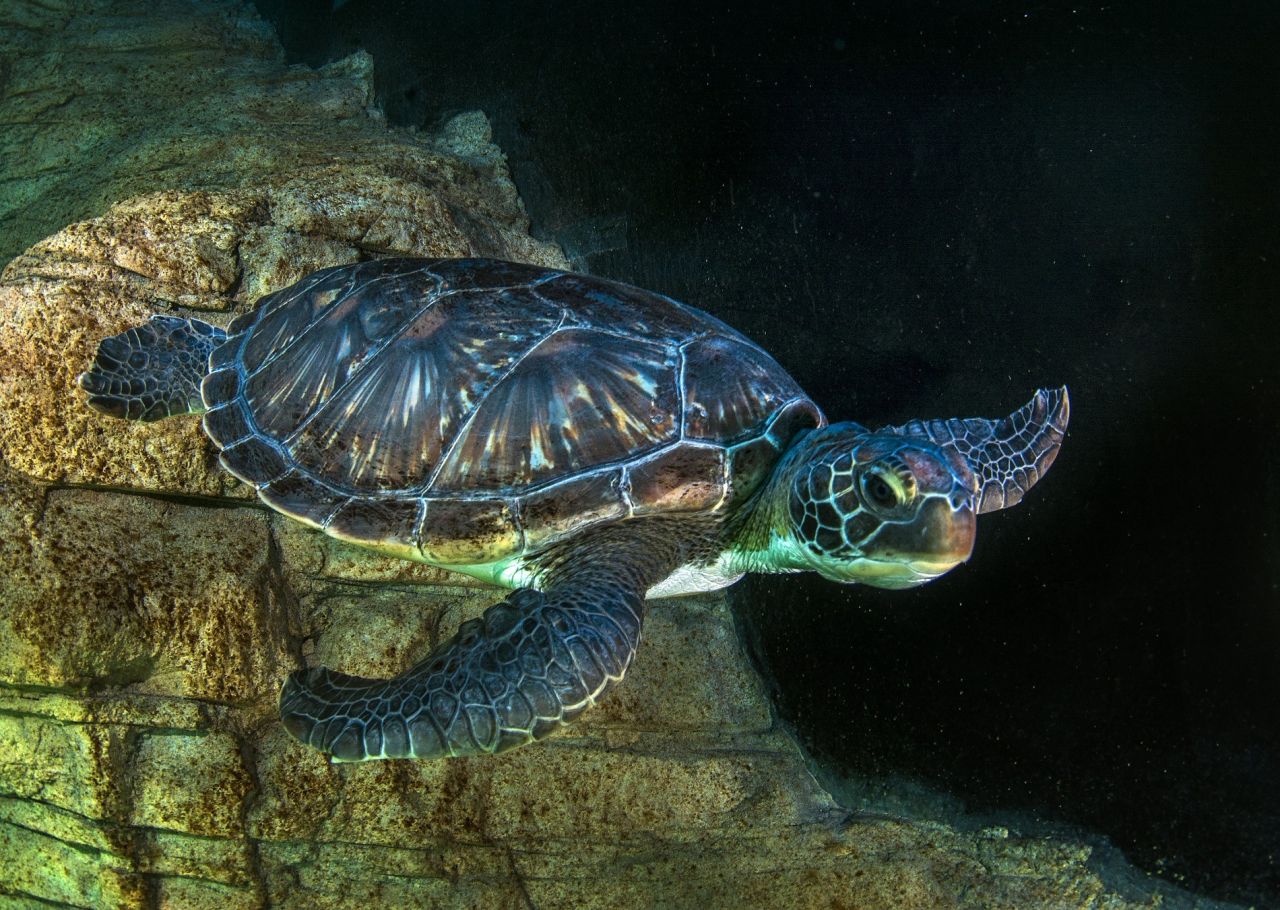Green turtles are so named because the fat layer underneath the carapace (shell) is green! The external colour of these turtles ranges from a very dark brown to a light brown mottled colour.
Green turtles and loggerhead turtles cannot be reliably distinguished from one another just by looking at their colour. Rather they can be distinguished from each other by looking at the general body shape (greens are rounder with a flatter lateral profile and a much smoother shell), the shape of the bill (hooked in loggerheads, but not in greens) and, most importantly, the number and arrangements of the central carapace plates and lateral plate rows (5 lateral plates next to central row in loggerheads, and 4 lateral plates in greens).
Adult green turtles feed mainly on seaweed and seagrass and thus can often be seen close inshore, basking at the surface.
Female green turtles lay up to 150 eggs every 12 days or so, totalling approximately 600 eggs per season. Nesting occurs on the islands off Mozambique and other Indian Ocean islands.
On some of these islands, green turtles have been hunted almost to extinction.
Download the document below to read more about turtles.
